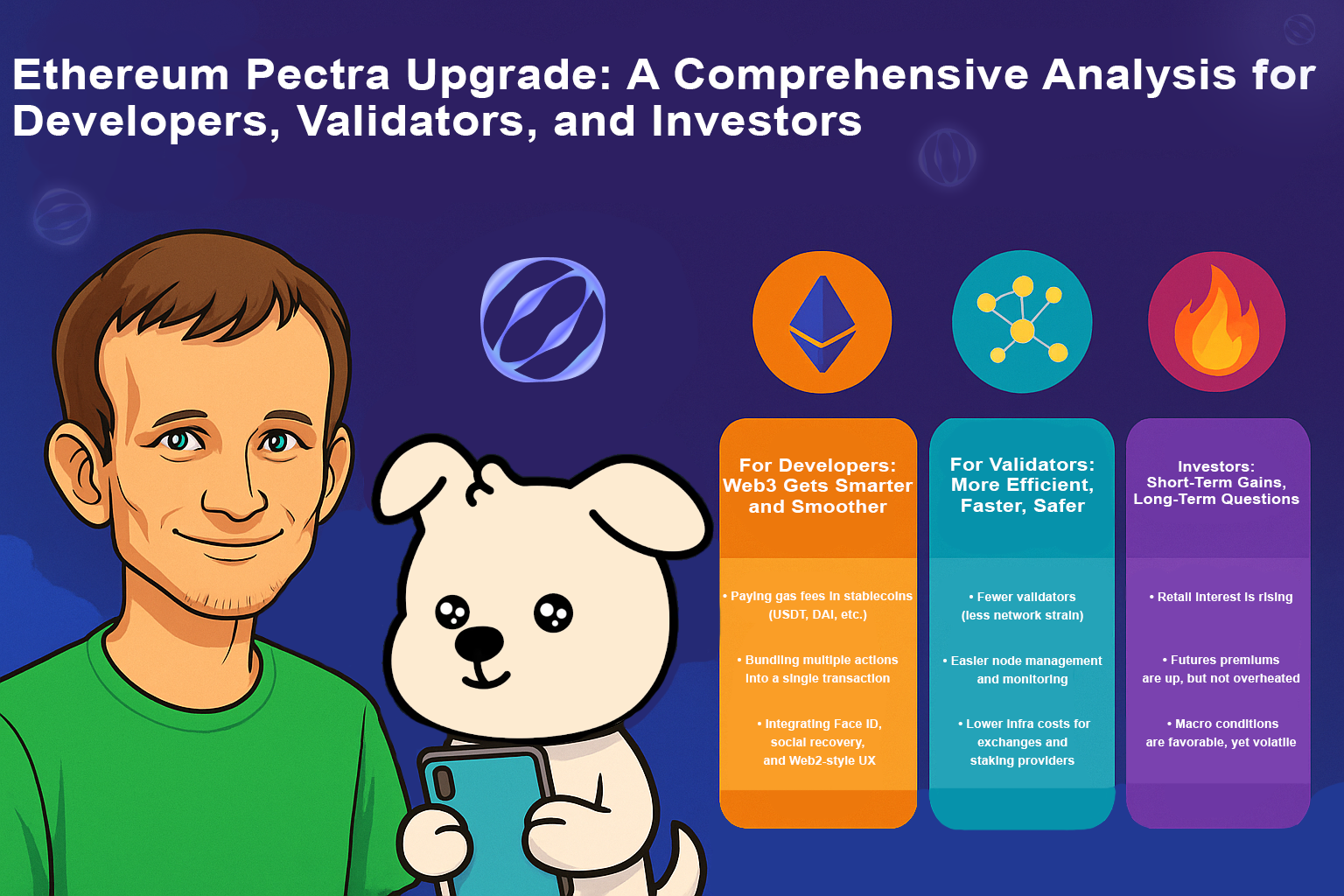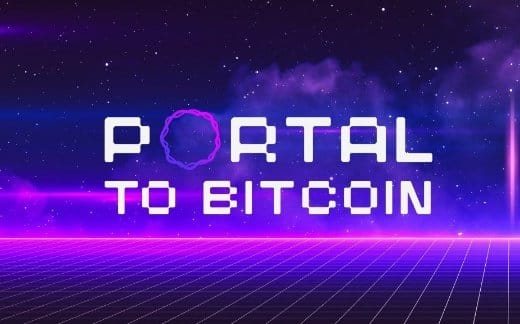🔄 Ethereum Pectra Upgrade: A Comprehensive Analysis for Developers, Validators, and Investors

On May 7, 2025, Ethereum entered a new chapter with the launch of the major Pectra upgrade - a bundled rollout of 11 EIPs that gave the network a “Pro Max”-level boost. This wasn’t just a technical milestone: it pushed ETH’s price past $2200 and triggered long-term shifts across the ecosystem - from dApp devs to institutional validators and DeFi investors.
Let’s break down how Pectra is reshaping Ethereum’s landscape, who’s already benefiting - and what pitfalls still lurk beneath the surface of progress.
"The Pectra upgrade plays a key role in the evolution of Ethereum, and the active involvement of the developer community is elevating the network’s capabilities to a new level," noted CoinGecko analysts.
The scale of the upgrade is hinted at by the long list of EIPs slated for implementation as part of the hard fork:

Let’s break down how the upgrade will reshape the Ethereum landscape, who’s already benefiting from it — and what hidden pitfalls still lurk behind the shiny facade of progress.
🧠 For Developers: Web3 Gets Smarter and Smoother
💼 EIP-7702 - The Era of "Smart" Wallets Begins
Account abstraction is finally real. Now, externally owned accounts (EOAs) can temporarily act like smart contracts, allowing:
- 💸 Paying gas fees in stablecoins (USDT, DAI, etc.)
- 📦 Bundling multiple actions into a single transaction
- 👁 Integrating Face ID, social recovery, and Web2-style UX
📌 Why it matters:
The DeFi onboarding barrier is dropping fast. For dApp developers, this unlocks access to a wider user base - without compromising security.
“EIP-7702 is a more advanced version of EIP-3074, offering better compatibility with account abstraction (ERC-4337). In this sense, it serves as a compromise between ERC-4337 and EIP-3074,” explained CoinGecko analysts.
The table below outlines the key differences between EIP-3074 and EIP-7702:
| EIP-3074 | EIP-7702 |
|---|---|
Introduces two new opcodes: AUTH and AUTHCALL |
Introduces a new transaction type — user_operation |
| Incompatible with future AVS implementations | Compatible with future AVS implementations |
| Assigns EOA control to smart contract code | Smart contract code is added to the EOA address |
The successful Merge, rising prices, and the ongoing development of the Ethereum ecosystem have led to a surge in the number of validators participating in network consensus. Their total count is approaching the 1.5 million mark, with the total value of staked ETH exceeding $140 billion.
While the abundance of validators has strengthened the blockchain’s security, some researchers have raised concerns about the potential impact of such growth on the network’s stability.

🧱 EIP-7251 - The Next-Gen Validator
The maximum stake per validator has increased from 32 to 2048 ETH. That means:
- 📉 Fewer validators (less network strain)
- 🧰 Easier node management and monitoring
- 💰 Lower infra costs for exchanges and staking providers
🎯 Bottom line: Institutions rejoice, retail hesitates. Centralization risks rise, but performance hits new highs.
"This allows large node operators to consolidate their validator sets to reduce the total number of validators. It also enables solo stakers to earn more and adds flexibility to the deposit process," explains the Ethereum.org website.
🛡 EIP-7002 - Secure Validator Exits
Validators can now initiate withdrawals via smart contracts, without hot keys staying online.
- 🔐 Safer for large staking providers
- 🔄 Supports automation, multisigs, time locks
- 📉 Reduced risk of fund loss or theft
🤔 What’s next: Expect a new wave of enterprise-grade Ethereum infrastructure.
⚡ EIP-6110 - Instant Validator Activation
Validator activation time has dropped from 12 hours to just 13 minutes!
- 🕐 Improved liquidity
- 🚀 Enables instant-staking and auto-deposits
💼 For providers: a breath of fresh air, especially in fast-moving market conditions.
⚙️ For L2 and Scaling: Ethereum Goes Full Speed
🚗 EIP-7691 - "More Blobs, Lower Gas"
The number of blob slots (temporary L2 data space) increased from 6 to 9.
- 📉 Arbitrum, Optimism, and Base fees hit historic lows
- 📈 More transactions per dollar
- 💡 Better peak-time stability
💬 Think of this like upgrading from a dirt road to a six-lane expressway.
🔥 ETHonomics: The Return of Deflation?
📉 ETH Burn Rate Exceeds Issuance Again
- 📊 Post-upgrade activity surged in L2 and DeFi - and so did the ETH burn rate
- 💎 At its peak, the annual deflation rate hit -6.8%
- 📦 Fewer validators → fewer newly minted coins
⚠️ Caveat: More gas fees are now flowing to L2 treasuries (Coinbase, Arbitrum DAO) instead of Ethereum mainnet.
📈 Investors: Short-Term Gains, Long-Term Questions
🚀 ETH +7.42% on Upgrade Day: What’s Next?
- 👥 Retail interest is rising
- 💬 Futures premiums are up, but not overheated
- 🌍 Macro conditions are favorable, yet volatile
🎢 Big question: Can ETH break the $2400-$2500 zone and challenge its all-time high?
⚠️ Not All Sunshine: Risks and Limitations
🧬 The "L2 Parasitism" Problem
- L2s are thriving, but most revenue goes to their treasuries - not Ethereum
- The mainnet loses income despite rising activity
🐺 Fierce Competition
- Solana is surging: 82M+ active wallets/month, growing in DeFAI and AI Agent verticals
- Tron and Hyperliquid are tightening the pressure
🧍♂️ Retail Left Behind
- 2048 ETH staking threshold favors institutions
- Centralization and regulatory scrutiny are looming
What Comes After Pectra?
While nothing is set in stone yet, the Ethereum community is considering the introduction of Verkle trees in the Osaka upgrade, which will follow Pectra.
"I'm really looking forward to Verkle trees. They will allow validator clients to operate in a stateless mode. This means staking nodes could run with virtually no disk space usage and sync [with the blockchain] almost instantly," noted Vitalik Buterin.

Are you interested in learning about Werkle Trees? I can go into more detail in the next article.
🧭 Conclusion: A Turning Point or a Pit Stop?
The Pectra upgrade isn’t just a batch of patches - it’s a major leap toward Ethereum’s next evolution:
✅ Better UX for users
✅ Flexibility for devs
✅ Efficiency for validators
✅ Resilience for the network
But even with these wins, critical questions remain:
- Can Ethereum retain value within the mainnet?
- Will it become a “gateway” rather than the heart of Web3?
- Can it reclaim its crown as DeFi’s king in the face of rising rivals?
🌐 Stay tuned - the next upgrade might just be the final chess move in this protocol arms race.
About Mitosis:
Mitosis APP
Blog
Docs
X
Discord



Comments ()